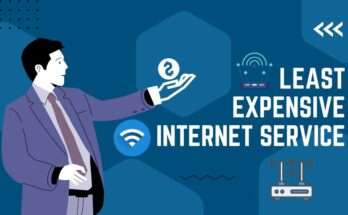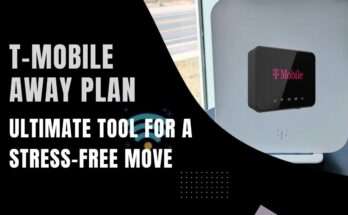Verizon 5G Home Internet provides various Internet services such as LTE Home Internet, 5G Home Internet and Fios. This serves multiple areas and necessities around the United States. Knowing where such services are delivered and their appropriateness for your address is significant with dynamic presence depending on infrastructure, geography and technology. This write-up will explore Verizon Home Internet alternatives, insights into its presence and its extent.
Verizon Home Internet Overview
Verizon 5G Home Internet offers 3 major Internet options with different exposure and technology.
- Fios Internet – Verizon Fios Home Internet is recognized for its blazing-fast and consistent speed of 2300 Mbps upload and download speed. This Internet service functions on a 100% fiber network. This is suitable for families with huge Internet needs like gaming, streaming or distant work. Its presence is restricted to regions with established fiber structures.
- 5G Home Internet – This wireless Internet provides speeds between 300 Mbps to 1000 Mbps managed by Verizon 5G Ultra Wideband network in chosen regions. It’s a self-configuring alternative with no annual contracts that makes it alluring for urban and suburban consumers near 5G towers.
- LTE Home Internet – This Internet service provides speeds between 25 to 50 Mbps utilizing Verizon’s 4G LTE network and is tailored for regions where 5G and Fios are not present, especially in remote and suburban areas. This has no data caps and assists HD streaming.
Verizon Home Internet plans aim at special technological and geographical domains, and presence relies on your location and approach to Verizon’s structure.
Verizon Home Internet Plans and Pricing
| Plan Name | Plan Type | Download Speed | Upload Speed | Price with AutoPay | Price Lock Guarantee | Promotional Offers |
|---|---|---|---|---|---|---|
| Fios 300 | Fios | Up to 300 Mbps | Up to 300 Mbps | $49.99 per month | 2 years | Online sign-up with a $100 gift card. |
| Fios 500 | Fios | Up to 500 Mbps | Up to 500 Mbps | $69.99 per month | 3 years | Online sign-up with a $100 gift card. |
| Fios 1 Gig | Fios | Up to 940 Mbps | Up to 880 Mbps | $89.99 per month | 4 years | Free WiFi Extender.Samsung 43-inch TV.Meta Quest 3S.$100 Gift Card. |
| Fios 2 Gig | Fios | Up to 2300 Mbps | Up to 2300 Mbps | $109.99 per month | 4 years | Free WiFi Extender.Samsung 43-inch TV.Meta Quest 3S.$100 Gift Card. |
| 5G Home | 5G Home | 50 to 300 Mbps | Up to 5 to 20 Mbps | $35 per month with mobile package or $50 per month standalone | 2 years | None |
| 5G Home Plus | 5G Home | 85 to 1000 Mbps | 20 to 75 Mbps | $50 per month with mobile plan or $70 per month standalone | 3 years | Choice of Samsung 43-inch TV.Meta Quest 3S.Free WiFi Extender. |
| LTE Home | LTE Home | Up to 50 Mbps | Up to 10 Mbps | $35 per month with a mobile plan or $50 per month standalone | 2 years | None |
Fios Availability – A Northeast Stronghold
Verizon Fios is mainly present in metro and suburban regions of New England and the Mid-Atlantic, surrounding almost 15 million houses in 9 states like Maryland, Massachusetts, Delaware, New Jersey, New York, Rhode Island, Pennsylvania, Virginia and Washington, DC. These Verizon Internet plans for Home confirm consistent upload or download speed and huge efficiency with packages between 300 Mbps to 2 Gbps.
Mention your address on the Verizon portal to examine the Fios presence. Verizon may advise 5G or LTE Home Internet, either provided or not. Verizon acquired by Frontier, stretched its fiber footprint to 25 states, which exceeds the Fiber extent importantly.
Fios is perfect for suburban and urban families in the Northeast requiring ultra-fast and strong Internet. It’s a restricted geographic prospect that it’s not an alternative for the entire nation.
5G Home Internet – Urban and Suburban Focus
Verizon 5G Home Internet is present in more than 2700 cities catering to almost 22% of the United States citizens. This uses the 5G Ultra Wideband network that utilizes mid-band 5G and mmWave for low latency and ultra-fast connections. Robust extent cities include Brooklyn, Miami, Atlanta, Salt Lake City, Philadelphia and Queens. Presence is focused on key metro regions where the 5G structure is fully grown.
Despite Fios, Verizon Wireless Home Internet never needs a wired structure which makes it easy to position. This depends on the vicinity to a clear view and 5G towers within surrounding cities, where special addresses may not become eligible because of signal restrictions such as trees or buildings. The usual download speed is available between 50 to 300 Mbps for the standard package and 85 to 1000 Mbps for the 5G Home Plus package.
Remote regions observe restricted 5G Home Internet extent as Verizon 5G network prefers urban density. The current network stretch may enhance activation in the underprivileged areas over time. To ensure presence, utilize Verizon online address examiner.
LTE Home Internet – Bridging the Gap
LTE Home Internet caters to Verizon disengagement for regions missing 5G or Fios coverage, present in 48 states. This utilizes the extensive 4G LTE network that makes it acceptable in urban and a few remote destinations where other Verizon services are not provided. It’s enough for broadcasting and common exploring but less perfect for bandwidth jobs with 25 to 50 Mbps download speed and 4 to 5 Mbps upload speed.
This service is particularly valuable for rural customers who lack access to fiber or 5G but have reliable 4G LTE signals. Verizon Internet for Home supports unlimited data and HD streaming, though performance may vary based on network congestion.
How to Check Availability?
Go to the Verizon portal and mention your complete address or zip code to know Verizon Home Internet availability near your address. The presence examiner will depict qualifying packages, services and promotional deals. Within a surrounding region, causes such as structure restrictions or signal strength may impact the qualifying criteria.
Insights and Considerations
- Urban vs Rural Divide – Verizon Home Internet and Fios rule in urban and suburban regions because of structure density whereas LTE Home Internet maintains spaces in low crowded areas. Remote users may obtain LTE and only present alternatives, despite speeds less than 5G or fiber.
- Future Expansion – The Frontier occupying signifies Verizon’s objective to strengthen its fiber network, which will make Fios acceptable to millions by next year. 5G stretch advance with up to 4.6 million 5G Home Internet consumers depicting a 16% year-by-year increment.
- Plan Perks and Costs – Verizon packages begin at $35 per month and LTE with mobile deductions and $50 per month for Fios. Deals such as a free Samsung 43-inch TV or Meta Quest 3S headset are worth it. No packages have contracts or data costs and establishment is self-maintained or free of cost.
- Customer Satisfaction – Verizon rates big in efficiency, securing the best scores in the Internet Cost Saver survey this year. LTE and 5G presentations can differ because of network situations, so examining signal strength is essential.
Conclusion
Verizon 5G Home Internet availability hangs on your address and the technology positioned in your region. Fios expands in the Northeast for fiber presentation. 5G Home Internet blazes in urban centers with Ultra Wideband access and LTE Home Internet extends exposure to wider in remote areas. By examining your location on the Verizon portal, you can recognize the top alternative for your needs. With recent network stretches and compelling benefits, Verizon remains a robust competitor for efficient home Internet. To know more about Internet plans, get in touch with the Internet Cost Saver customer care number – +1(855)-208-9742.


